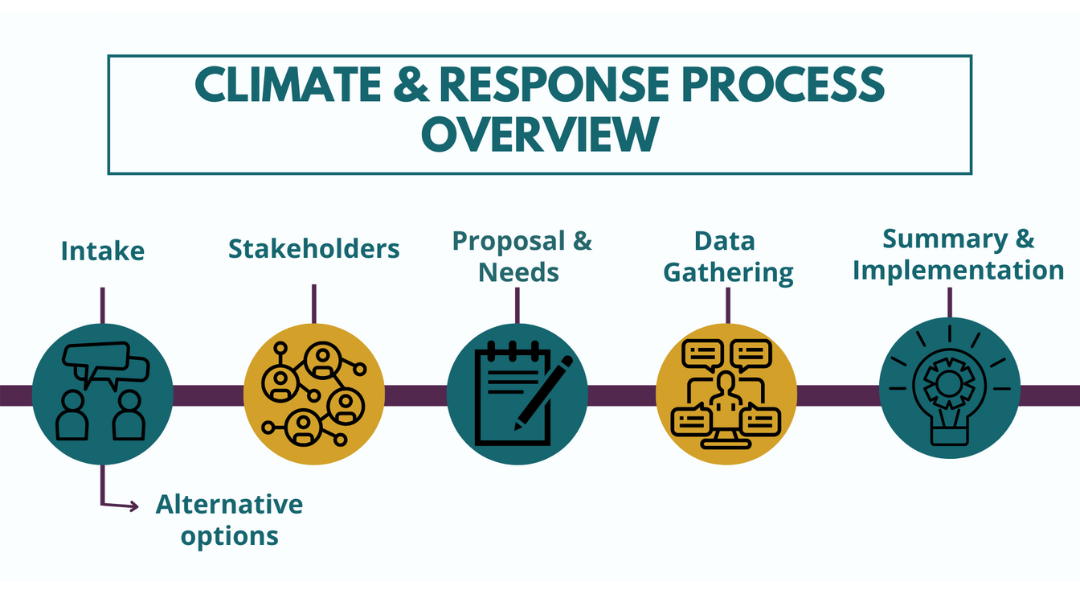Prevention, Outreach and Education Department
Office for Civil Rights and Title IX Education and Compliance
Office for Civil Rights and Title IX Education and Compliance
How does the Climate & Response Full Process work?
The Climate & Response Full Process includes five interconnected areas for exploring, understanding, and implementing positive pathways forward in units across the university. We know that the process of changing the climate and culture does not happen quickly; it takes time, commitment, and a collaborative effort.
The Full Process is a framework that was developed to deeply and sustainably assist and support units across the university that have been impacted by gender and/or power-based harm. The Full Process is outlined below to provide a sense of the level of engagement involved in this process.

A C&R team member will explore initial needs and concerns with the primary contact for the unit, often the leader(s). These preliminary conversations will help to develop a plan that will best fit the needs and climate of the unit. A critical element of Climate & Response work is that it is voluntary - work with the Climate & Response team is not a sanction or attached to disciplinary action for an individual or a unit.
To fully understand the climate at various angles within the unit, identifying stakeholders is key.
Stakeholders may include people in formal leadership positions, informal leaders, logistical contacts, university partners, among others. Building trust is crucial and all perspectives and voices are vital to the process. This helps to increase accuracy in understanding the wide range of experiences within the climate of that unit.
The proposal will include a plan for how the C&R team will collect additional information and find ways to measure social change within the unit. The proposal is then shared with the entire unit. Involving the entire unit and keeping members of the unit informed is an important step to establish continued buy-in from leaders and stakeholders and to demonstrate that this process and the work being done is a community-driven effort. The proposal will outline the next steps in the process, which may include one-on-one interviews, focus groups, facilitated dialogues, or other methods needed to further the work being done.
Once the proposal for identifying needs is agreed upon, gathering additional information from all stakeholders associated with the unit will begin. During this phase, the C&R team will gain a better understanding of the needs and begin developing recommendations. The process for data gathering is often decided based on the intensity of the climate assistance needed and the size of the unit.
Once data gathering sessions are completed, a summary of trends and themes will be created by the C&R team for review by the unit. Often there is an opportunity for discussion and/or anonymous feedback around the trends and themes to ensure accuracy of the information. If any changes are required, those are made and incorporated into an executive summary.
At this point, the C&R team will work collaboratively with the unit to develop recommendations and an implementation plan. The C&R team will continue to be available to the unit as a guide and resource during the implementation phase.